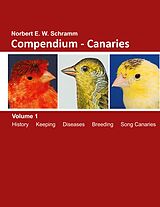Intelligent Soil Management for Sustainable Agriculture
CHF99.90
Download est disponible immédiatement
Description
This book conceptualizes a revolutionary idea based on a mechanistic-mathematical model in which the "Buffer Power" of the principal and problematic nutrients like phosphorus, potassium and zinc is quantified. This is achieved by using either a very sophisticated technique, electro-ultra-filtration, or a simple adsorption-desorption equilibrium technique, and by integrating the "Buffer Power" of the nutrient in question into the computations, accurate fertilizer recommendations are made. This technique was field tested across Europe, (Germany and Belgium), Africa (The Republic of Cameroon), and Asia (both Central Asia- Turkey and South Asia-India), during a period of three decades in test crops, such as, summer rye (Secale cereale), maize (Zea mays), wheat (Triticum aestivum), white clover (Trifolium repens), a highly nutritious and palatable fodder crop for Africa, black pepper (Piper nigrum) and cardamom (Elettaria cardamomum). Remarkable precision in predictability of plant uptake of phosphorus, potassium and zinc was obtained employing the technique.
"The Nutrient Buffer Power Concept" project was shortlisted for the very prestigious U.S. $1 Million Rolex Awards For Enterprise of The Rolex Foundation, Geneva, Switzerland, for its outstanding originality and quality from more than 3500 nominations worldwide and is the only project chosen for this very coveted distinction from the Asian continent.
Auteur
Prabhakaran Nair finished his Doctoral research, specializing in soil fertility and plant nutrition, at Asia's premier research and post graduate studies institute in New Delhi, India, the Indian Agricultural Research Institute in 1965 and thereafter worked for five years doing postdoctoral research at the State University of Ghent, Belgium. Thereafter, Professor Nair worked as Senior Research Officer and Associate Professor at Asia's premier agricultural university, G.B.Pant University of Agriculture & Technology, Pantnagar, India. Professor Nair received the Senior Fellowship of the Alexander von Humboldt Research Foundation, The Federal Republic of Germany, and worked at the Institute of Plant Nutrition, Justus von Liebig University, Giessen, and later, at the Institute of Plant Nutrition, University of Hohenheim, Stuttgart. Developed The Nutrient Buffer Power Concept, working with Professor Konrad Mengel and further tested its utility working with late Professor Horst Marschner.
Professor Nair was appointed to the National Chair of the Science Foundation, The Royal Society, Belgium, and, affiliated to the State University of Ghent. Subsequently worked as Professor & Head, Departments of Agriculture, Soil Sciences and Basic Sciences at the University Center, Dschang, The Republic of Cameroon, Senior Professor at the University of Fort Hare, Alice, The Republic of South Africa. Currently Chief Scientific Advisor, The Proletarian Foundation of India. Recipient of The Robertson Memorial Gold medal for outstanding work in Agronomy and many other national and international awards.
Professor Nair has authored more than 100 peer reviewed research papers published in prestigious international journals, nine books (three published by Elsevier) of which one ISSUES IN NATIONAL AND INTERNATIONAL AGRICULTURE was launched by India's great President late Dr A.P.J.Abdul Kalam. The only agricultural scientist in the world to have been invited six times to contribute invitational chapters to ADVANCES IN AGRONOMY, the magnum opus of agricultural science. The Nutrient Buffer Power Concept project was shortlisted for the very prestigious U.S. $ 1 Million Rolex Awards For Enterprise 2012 of The Rolex Foundation, Geneva, Switzerland, for its originality from more than 3500 nominations worldwide, and is the only project selected for this coveted distinction from the Asian continent.
Contenu
Chapter 1. Introduction .- Chapter 2. Efficient Plant Nutrient Management.- Chapter 3. The Buffer Power and Effect on Nutrient Availability.- Chapter 4. Quantifying the Buffer Power of Soils and Testing Its Effect on Nutrient Availability.- Chapter 5. Case Studies with Asian Soils.- Chapter 6. The Role of Electro-Ultrafiltration (EUF) in Measuring P and K Intensity for the Construction of Buffer Power Curves.- Chapter 7. Quantifying the Buffer Power for Precise Availability Prediction Heavy Metals.- Chapter 8. Case Studies with South Asian Soils.- Chapter 9. Case Studies with Central Asian Soils.- Chapter 10. Case Studies with African Soils with Regard to P and K.- Chapter 11. The Changing Face of Global Agriculture.- Chapter 12. Sustainable Agricultural Production on a Small Farm.- Chapter 13. General Profile of Current Agricultural Systems.- Chapter 14. Sustainability Conundrums.- Chapter 15. Land Management for Sustainable Agriculture.- Chapter 16. Erosion Control and Maintenance of Good Soil Tilth.- Chapter 17. Soil Fertility and Nutrient Management.- Chapter 18. How to Manage Water Use for Sustainable Agriculture?.- Chapter 19. Primary Productivity and Biodiversity.- Chapter 20. Environment and Management.- Chapter 21. Policy Making and Regulations.- Chapter 22. Phosphate Solubilizing Microorganisms and Their Role in Sustainable Agriculture.- Chapter 23. Energy Management in Sustainable Agriculture.- Chapter 24. Measurement of Agricultural Sustainability.- Chapter 25. Climate Change and Agricultural Production.- Chapter 26. Achieving Agricultural Sustainability The Future Challenge.- Chapter 27. Holistic Technologies.- Chapter 28. Integrated Plant Nutrient Management.- Chapter 29. The Salient Conclusions.
